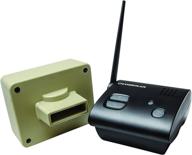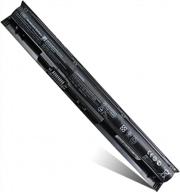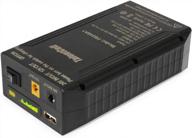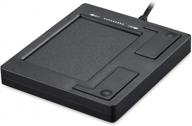
Review on Dakota Alert MURS Detection Kit by Charles You

Transmitter a little gluttonous
I used ("burned") this Dakota MURS Alert around the house before installing it on our ranch gate. As a lifelong pro fan, I was a little concerned about the power consumption of the MURS and PIR transmitters. Claimed power output was over a watt, which is actually quite a lot on battery power, especially if you have a lot of sensor activations. So I tested it in my electronics lab. Test parameters: Power supply 9V (constant voltage) from Rigol DP832 programmable power supply. Current measured with HP 34401A 6.5 Digit Multimeter. *Note* The values shown on the test equipment pictures may not match the following figures, the current has changed slightly in standby mode and a few mA in transmit mode. The current used in standby mode (no transmission) is 0.0068 A or 6.8 mA. Standby power - 0.06 W. The transmission current used is 0.700 A or 700 mA. Transmission power 6W (no HF power, but DC). I wanted to use my HP 438A power meter to measure transmit power, but the sensor was only rated for 300mW and I didn't want to bother with sizing the attenuator. Conclusion for now - too many batteries being replaced as we have heavy traffic through the gate so I will modify the transmitter/sensor to be powered by a sealed 12v battery. I'm going to use an LM 7809 regulator to regulate the voltage down to 9B. There is enough room inside the case to add a 7809 and a few other necessary parts, or I could add this to the battery itself to keep the case from getting hot. With 6.8 mA, it doesn't get particularly warm in idle. Another benefit of being powered by a large (relatively) 12 volt battery is that transmit power remains constant, unlike AA batteries which degrade over time. I used new Duracell AA alkaline batteries for initial testing, which I measured at 1.48 volts. After about 24 hours of very active alarm use (many transmissions), the AA cells measured 1.44 volts.
- Great overall performance
- Doubtful
New products
Comments (0)
Top products in 📹 Motion Detectors

YoLink Smart Outdoor Motion Detector: 1/4 Mile Range LoRa-Powered Wireless Sensor for Driveway Alert, Trespassing Alarm, Remote Monitoring & Alerts - Alexa, IFTTT Compatible. Hub Required!

11 Review

Wireless Driveway Alarm System - Long Range 1/2 Mile with Solar Power & Weatherproof Design - Adjustable Sensitivities and Outdoor Motion Sensor for DIY Security Alert

11 Review

🔒 Chamberlain Group CWA2000 Chamberlain Driveway Alert: Enhanced Security in Sleek Black Design

10 Review

📸 Datacolor SpyderX Pro SXP100 – Advanced Monitor Calibration for Professional Photographers and Designers

10 Review
Another interesting products

12 Months Warranty HP ProBook 440 G2 450 G2 TPN Q139-Q143 Battery Replacement - VI04 756743-001, 756745-001, 756479-421 HSTNN-DB6K HSTNN-LB6K

38 Review

🔋 TalentCell PB240A1 | 24V Lithium Ion Battery with 22400mAh Capacity | Rechargeable Power Pack for LED Light Strip, CCTV Camera, Smartphone & More

26 Review

Dingsun SVideo To HDMI Converter: 3RCA AV Support 1080P/720P Compatible With WII U, PS2/PS3, STB, Xbox & More!

43 Review

Effortlessly Navigate Your Laptop Or Desktop With The Perixx PERIPAD-501 Wired USB Touchpad

27 Review

